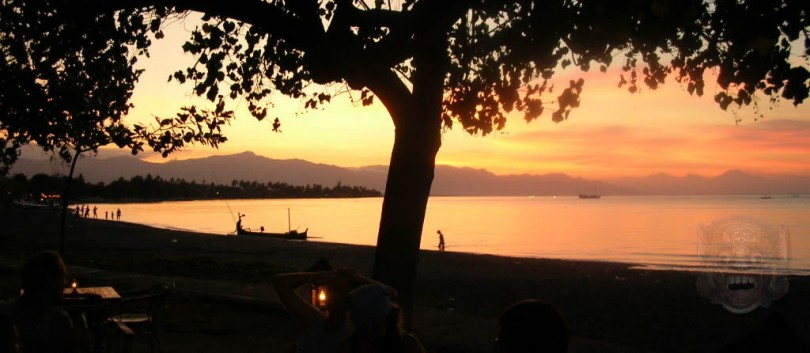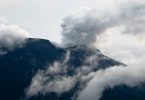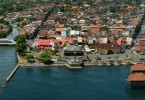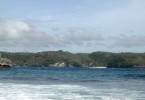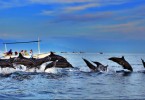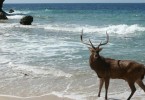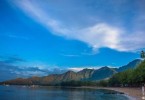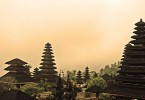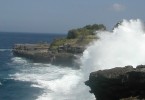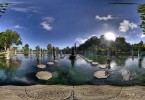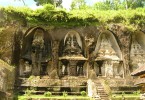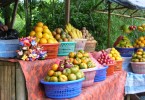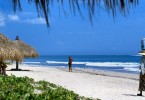Lovina Beach North Bali | History
In the early 1950s the last raja (king) of Buleleng North Bali, Anak Agung Pandji Tisna, visited the beach area west of Singaraja. Pandji Tisna was very impressed when he saw the beauty of this beach area and he decided to build a place to relax on this beach, for he intended to revisit the area regularly. Having a place to stay here also had the advantage that he could be there for longer periods of time, without each time having to return to his palace in Singaraja in the evenings. The place he built consisted of a house with a restaurant including three rooms where guests could stay the night. The opening of his beach house, which Pandji Tisna called ‘Lovina’, was in 1953. With the opening of his beach house, the first guest house of Lovina was a historic fact. In those early days the guesthouse was mainly a hang out for his friends, especially during the weekends; however it was also regularly frequented by government officials and people from the upper middle class of Singaraja.
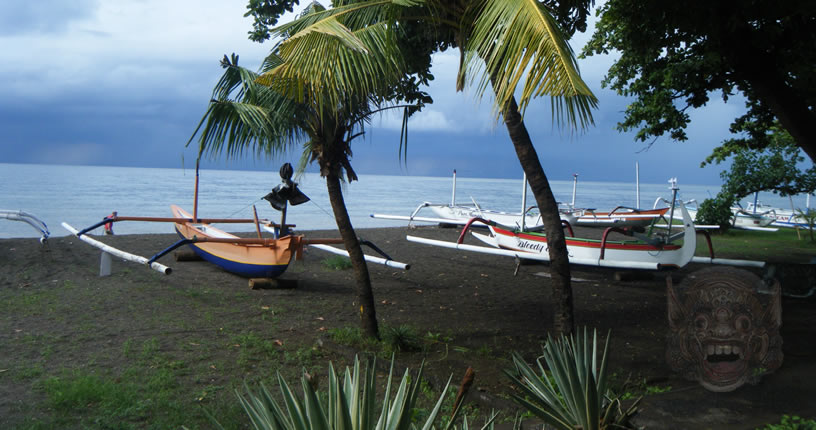
Ethymology
Lovina is an acronym of two words, ‘Lov’ and ‘Ina’. The ethymology of the word ‘Lovina’ however is not clear. Some people say that ‘Lovina’ means ‘Love Indonesia’, while others are convinced that the word is derived from ‘Lafeina’, which was the name of a small hotel near Mumbay in India, where Pandji Tisna once stayed.
Location
The beach house of Pandji Tisna was located at the beach of Kampung Baru of Tukad Cebol village. Tukad Cebol is the former name of Kaliasem village and is nowadays considered to be ‘Central Lovina’. Today this beach house does not exist anymore, however its location used to be at the other side of the river outlet opposite of where the Sea Breeze restaurant is located at Lovina Beach , just west of the Dolphin statue at Binaria Square.

Modern Lovina
In the 1960s tourism to Bali started to grow and as a result, tourism became more and more important to the economy of Bali. Since the first official hotel of Bali opened in 1963 (Hotel Bali Beach, Sanur), hotels and restaurants were built everywhere in Bali. With the opening in 1970 of ‘Ngurah Rai’, the international airport of Bali, tourism started to grow exponentially – especially in the south of Bali, however in a much lesser extent in Lovina Beach, which is mainly due to the distance from the airport and the poor quality of the roads at that time. Whereas in the 1970s a trip by car from the airport to Lovina Beach would take you a full day, nowadays the roads are in perfect condition and the same trip will take about 2.5 hours, depending on the amount of traffic on your way.
As the years passed Lovina Beach became more popular, especially to people who love culture, nature with quiet and peaceful surroundings. More hotels and restaurants were built, starting along the beach to the east and west of Pandji Tisna’s beach house. Today, dozens of hotels and restaurants can be found all along the beaches west of Singaraja, starting at the village of Pemaron via Tukadmungga, Anturan, Banualit, Kalibukbuk and Kaliasem to Temukus, covering a total stretch of about 12 kilometres. This whole stretch of beaches is called ‘Lovina Beach’; however per tradition ‘Central Lovina’ can still be found around the location where once Pandji Tisna’s beach guest house could be found. Binaria Square with its dolphin statue as an obvious landmark marks the ‘center’ of Lovina nowadays. In this area you will also find most of Lovina’s night life, a concentration of restaurants, bars and disco’s.

A little about the beaches and the sea of Lovina Beach
The beaches of Lovina are unique in its kind and very characteristic through the black sand which was deposited in ancient times by enormous volcanic eruptions in the Bedugul area. The coastal area of Lovina is rural; one will regularly encounter farm land and rice fields bordering the beaches, with villages amidst coconut, banana and mango plantations along the mountain side of the main road that runs parallel to the coast between Singaraja and Seririt.

The beaches of Lovina are situated at a bay with shallow water and are protected by coral reef. There are no dangerous currents in the sea of Lovina and therefore it is very safe for swimming and snorkeling. For this reason Lovina appeals especially to families with children.
In the guide books Lovina Beach is described as a quiet touristic center where every morning around sunset one can sail out in outriggers (boats of local fishermen) to spot hundreds of dolphins at sea, which is not only unique to wonderful Bali’s nature but also to other parts of the world where dolphins can be sighted. However, the Lovina area has much more to offer. There is a lot of choice of activities and leasure on the field of culture and nature. There are amazing possibilities for jungle trekking through pristine forest with impressive waterfalls, rice fields and plantations, several destinations for snorkeling and diving, there are some beautiful mountain lakes, the culture of North Bali is unique and very different from other parts of Bali The people of North Bali are very friendly and their hospitality is exceptional.
share this article

